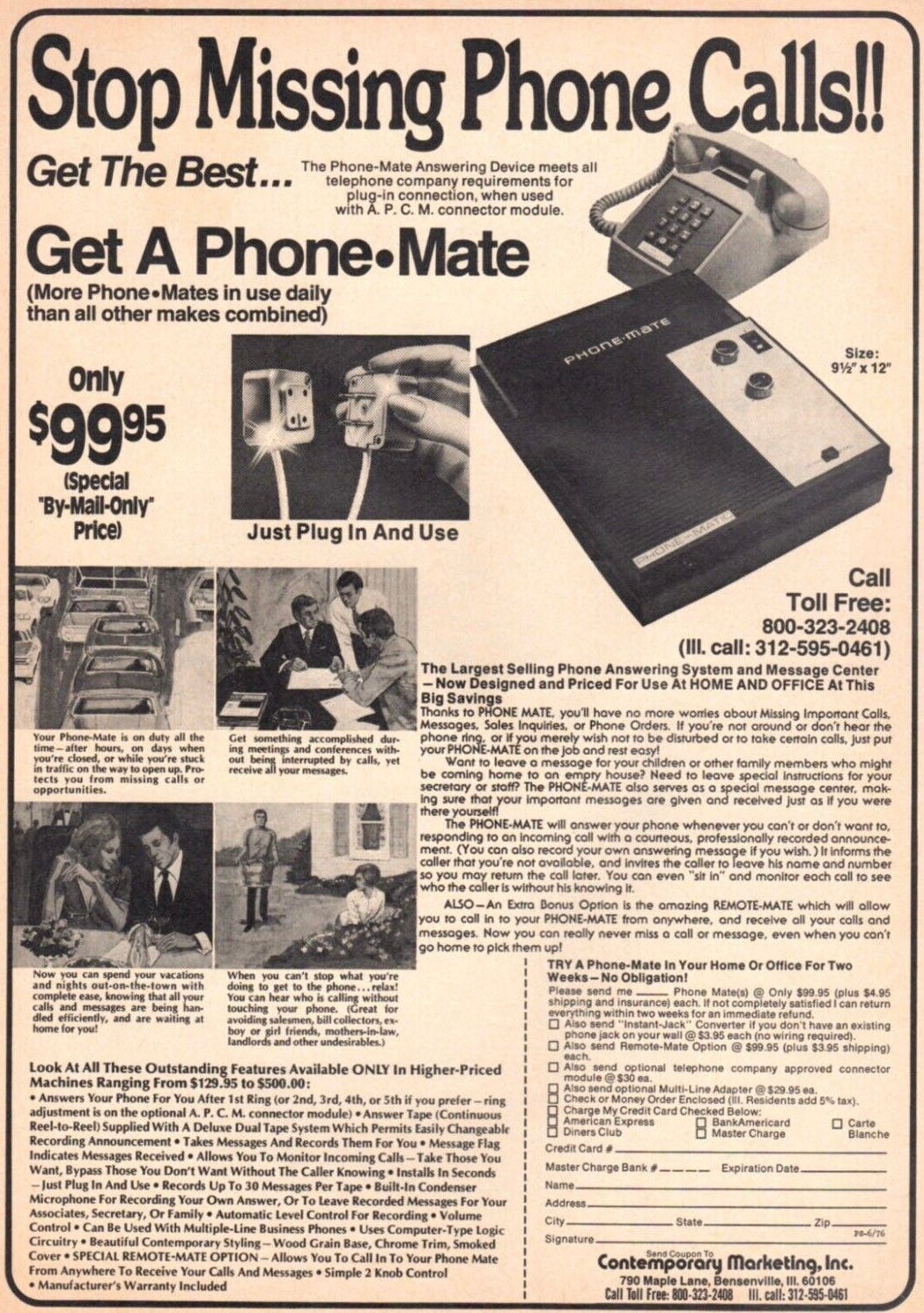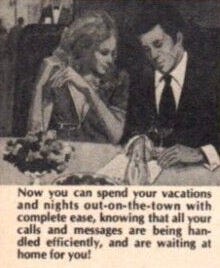Gadgets, Electronic
Reservations Recommended, Chapter 2:
He goes into the den to check the messages on his answering machine. The first is a nonmessage, or an antimessage: the machine’s go-ahead-and-talk whine, a silent hesitation at the other end of the line, the clunking of a handset hanging up, the dial tone, the whine again.
Brian Santo, “The Consumer Electronics Hall of Fame: PhoneMate 400” in IEEE Spectrum:
Before there were answering machines, if you were anticipating a call that you didn’t want to miss, you had to stay close enough to your phone to hear it ring—and close enough to get to the phone within seven or eight rings. These are of course arbitrary numbers that somehow everyone had settled on as being the proper number of times to let a telephone ring before assuming the recipient of the call wasn’t going to answer. If you didn’t pick up in time, there was no way in those days to know who was calling. If you were out, you had no way of knowing if anyone had called at all.
The PhoneMate 400 changed all that. With the PhoneMate, people expecting a call no longer had to wait by their phones. The arc of the product’s rise and near-disappearance tells the story of how integral the basic function became to telephony. In the mid-1980s, millions of answering machines were sold each year; by the 1990s, tens of millions. By the early 2000s, the market for answering machines had started shrinking fast, but only because the function was shifted into the network, in the form of messaging services that eventually came free with nearly every telephony account. Even so, the machines have never quite disappeared entirely. In 2019, stand-alone machines could be bought for as little as $23, and some phones come with answering machines built in.
See also: Gadgets, Electronic TG 83; TG 84
Have you missed an episode or two or several?
You can begin reading at the beginning or you can catch up by visiting the archive or consulting the index to the Topical Guide.
You can listen to the episodes on the Personal History podcast. Begin at the beginning or scroll through the episodes to find what you’ve missed.
You can listen to “My Mother Takes a Tumble” complete and uninterrupted as an audiobook through YouTube.
You can ensure that you never miss a future issue by getting a free subscription. (You can help support the work by choosing a paid subscription instead.)
At Apple Books you can download free eBooks of Little Follies and Herb ’n’ Lorna.
You’ll find overviews of the entire work in An Introduction to The Personal History, Adventures, Experiences & Observations of Peter Leroy (a pdf document) and at Encyclopedia.com.




